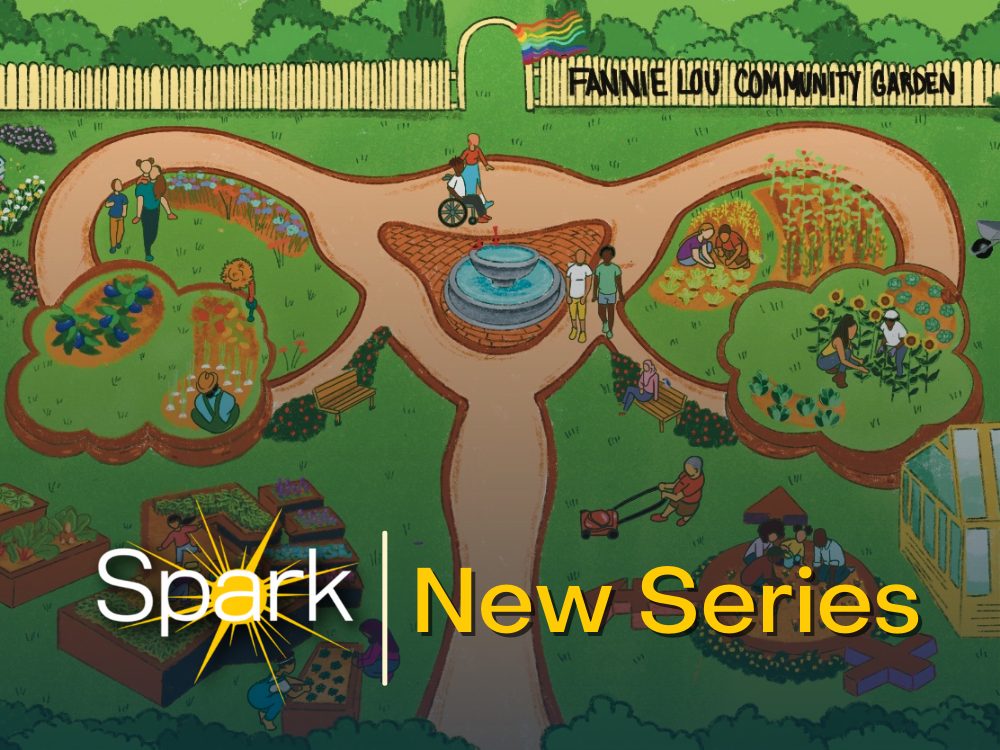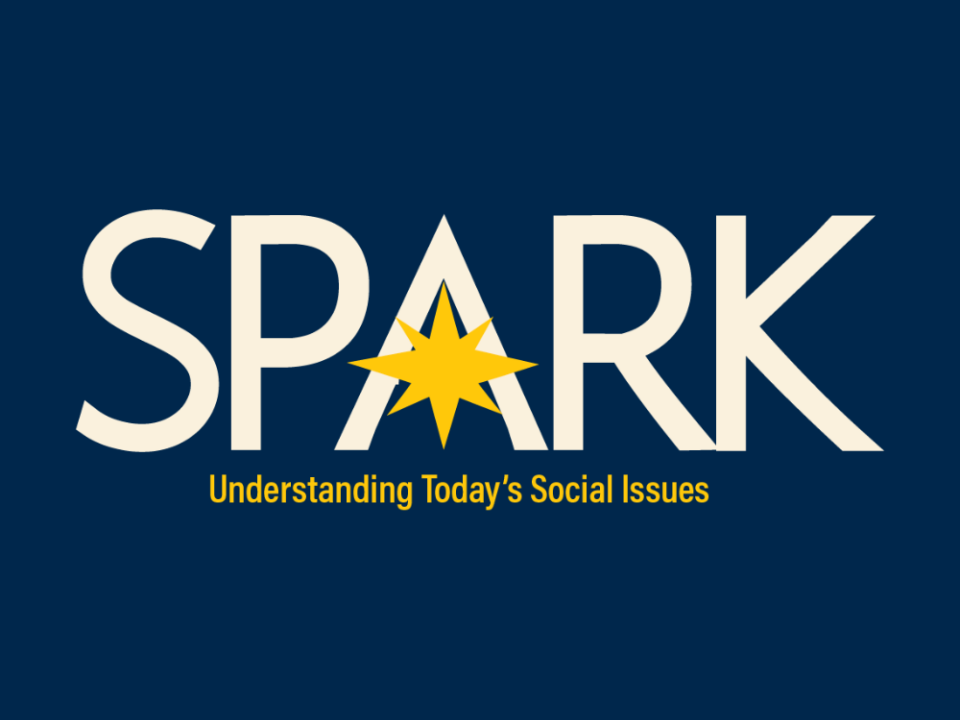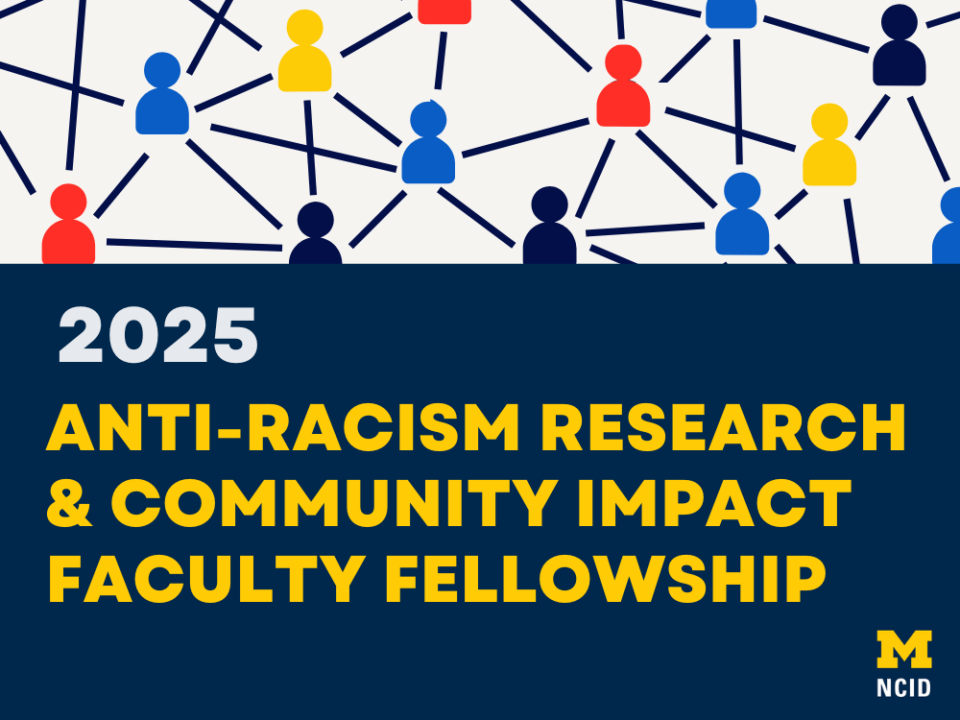- About
- News
- Events
- Initiatives
- Anti-Racism Collaborative
- Change Agents Shaping Campus Diversity and Equity (CASCaDE)
- Diversity Scholars Network
- Inclusive History Project
- James S. Jackson Distinguished Career Award for Diversity Scholarship
- LSA Collegiate Fellowship Program
- University Diversity & Social Transformation Professorship
- Publications & Resources
- About
- News
- Events
- Initiatives
- Anti-Racism Collaborative
- Change Agents Shaping Campus Diversity and Equity (CASCaDE)
- Diversity Scholars Network
- Inclusive History Project
- James S. Jackson Distinguished Career Award for Diversity Scholarship
- LSA Collegiate Fellowship Program
- University Diversity & Social Transformation Professorship
- Publications & Resources

Pop-Up Writing Opportunity: “Campus Abolition and Educational Safety Beyond Policing”
May 9, 2023
Anti-Racism Collaborative awards over $100,000 in Graduate Research Grants
June 27, 2023“Reproductive Justice as a Human Right”
Introduction by series curator Dr. Seanna Leath, Assistant Professor of Psychological & Brain Sciences at Washington University in St. Louis.
Over the course of our lives, there are defining historical moments that remain with us—moments where we can remember where we were, what we were doing, and how we felt—moments with a “before” and an “after.” As a millennial born in the early 90’s, my defining moments exist along quite a continuum. I still remember the shock, fear, and confusion I felt as a fifth-grade student, watching the September 11th plane bombings in response to US destabilization in the Middle East. I’d just finished getting a sticker for my spelling test when they made an announcement over the school intercom system that ‘we were under attack.’ Or the anticipation, excitement, and joy that I experienced as a Black girl in high school after the election of Barack Obama in 2008. I can still hear the shouts and cries from neighbors who ran outside to celebrate and savor the moment together—our nation’s ‘first Black president.’
Over the past few years, many defining moments in the US have involved a blatant rise in prejudicial extremism and disregard for the safety and welfare of some of the most structurally marginalized communities in our country. Take for instance, the election of Donald Trump, who rose to presidential fame on a campaign platform of racist, anti-immigrant, and transphobic views. Or the surge in anti-Asian violence alongside persistent racialized disparities and preventable deaths from COVID-19 due to inadequate access to healthcare among Black, Hispanic, and American Indian and Alaska Native people. Finally, let us never forget the militarized federal response to Black Lives Matter protests in 2020, as citizens called for accountability and social action amidst the persistent extrajudicial killings of Black Americans like Breonna Taylor, George Floyd, and Ahmaud Arbery.

As we head into June—hopefully with a hint of pride (shout out to Marsha P. Johnson and her role in the 1969 Stonewall Uprising)—another moment that may be salient to many of us right now is the landmark decision to overturn Roe v. Wade on June 24, 2022 in the Dobbs V. Jackson case. This legislative decision had immediate and rippling effects across the country, as questions about the scope of women’s reproductive choices were now being determined by local and state legislatures. In the past year alone, at least 13 states have made it illegal to access abortion, while other states reinforced individual’s rights to make personal reproductive decisions. We have witnessed the cruelty of intersectional oppression as people from communities that were already less able to access reproductive healthcare are now also experiencing heightened surveillance, criminalization, and punishment with fewer legal resources to protect themselves and their loved ones.
Still, as Gen Z abortion advocate, Olivia Julianna, reminded audience members in a 2023 keynote address for Planned Parenthood-St. Louis, “Roe was the floor, not the ceiling.” While monumental in its moment, Roe was never enough to ensure equitable access to abortion as healthcare, nor did it offer bodily autonomy and fully agentic reproductive choices. This was particularly true for BIPOC women (Black, Indigenous, and People of Color), people from lower income communities, disabled people, youth, and transgender and non-binary people in the US. Also, abortion is only one piece of the larger reproductive justice puzzle—a puzzle that includes ensuring that all individuals have: (1) the right not to have a child; (2) the right to have a child; and (3) the right to raise and nurture the children we do have in safe and healthy environments. These rights can only be achieved when everyone has the complete economic, social, and political power and resources to make autonomous and informed decisions about their bodies and their families—and we’re most certainly not there yet.
We are now in the “after” part of this historical moment, and I remain encouraged as I witness scholars, activists, and community advocates urge us forward in radically envisioning a future where healing justice and community care are at the center of our conversations, social practices, and governmental policies around reproductive justice. This Spark series offers a slice of the breadth, depth, and nuance of these efforts across the country—efforts that continue despite the structural barriers that constrict people’s rights to make decisions about their bodies and their lives without threat of violence, coercion, stigma, or discrimination. In the six essays that follow, the contributors have integrated empirical evidence with personal reflections, offering the critical reminder that we all have a vested interest in reproductive justice as a human rights movement.
These essays discuss the critical importance of having more expansive and inclusive reproductive legal protections, before and beyond birth. For instance, you will read about the sociocultural transformation of fetuses into babies (Stuckey), and about the positive impact of using a tiered approach in contraceptive counseling to promote effective family planning (Winters). These pieces encourage us to move past subjective debates about ‘when life begins,’ and instead, attend to the social practices and contexts necessary to make birthing and family planning safer in the US. You will learn more about the nuances of adoption as personal trauma and reproductive coercion (DeBetta), and the necessity of drawing connections between gender-based violence and women’s reproductive health during unprecedented crises (e.g., COVID-19; Alexander and Sower). The scholars in this series pose incisive questions about how far we have truly come in rectifying historical reproductive injustice based on present-day realities. In their essay, Filipowicz reviews how racism, enslavement, and current social and environmental factors influence breastfeeding disparities in the Black community, and in the final piece, Carr illustrates how we can contextualize Fannie Lou Hamer’s legacy of laboring for a better world as an example of othermothering.
As the beloved Toni Morrison reminds us, “If you are free, you need to free somebody else. If you have some power, then your job is to empower somebody else.” In addition to their insightful commentaries, each essay includes concrete suggestions on how to support reproductive justice efforts across the country. We invite you, the readers, to engage with these essays to learn something new and to reflect on your personal praxis. How will you remember this historical moment in years to come? What part did you play in ensuring that Roe was indeed, a floor, and not a ceiling?




